New Hampshire is well-known for its frigid temps, just as many of the other New England States are. What most people don’t realize, however, is just how cold one place in the state gets. In fact, one particular mountain gets so cold it has a few world records of its own! Today, we are going to explore this freezing place, plus learn a bit about some of the other cold places across the state of New Hampshire. Let’s discover the coldest place in New Hampshire!
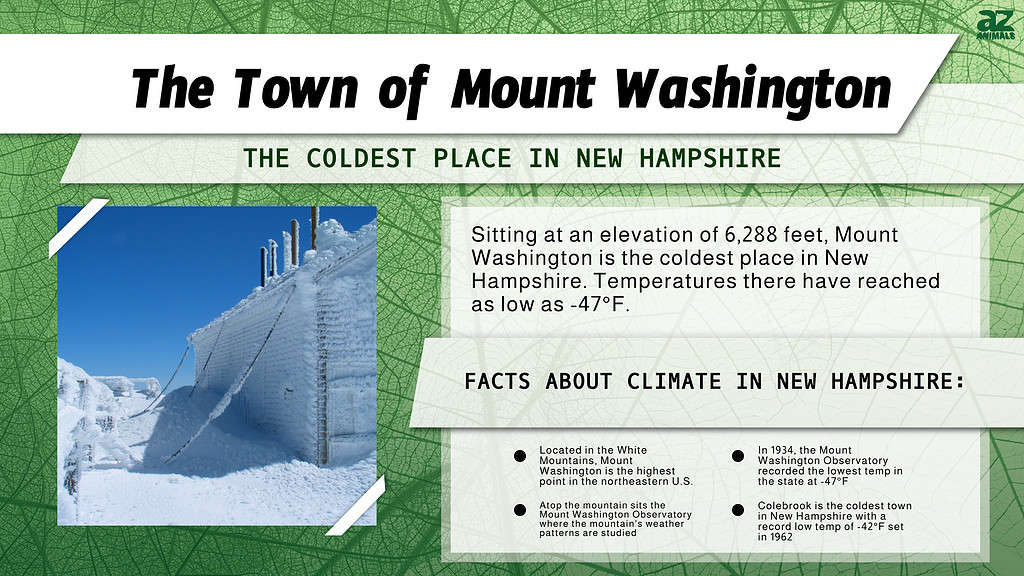
The Coldest Place in All of New Hampshire
Mount Washington is the coldest place in New Hampshire. Located in the White Mountains, this towering peak stands at an elevation of 6,288 feet and is the highest point in the northeastern United States. Despite its picturesque location, Mount Washington is known for its harsh and unforgiving weather conditions.
In 1934, the Mount Washington Observatory recorded the lowest temperature ever in New Hampshire at -47 degrees Fahrenheit. This frigid temperature is due in part to the mountain’s high elevation and its position in the path of cold air masses coming down from Canada. In addition, the mountain’s location near the coast exposes it to the frigid waters of the Atlantic Ocean, which can also contribute to its freezing temperatures.
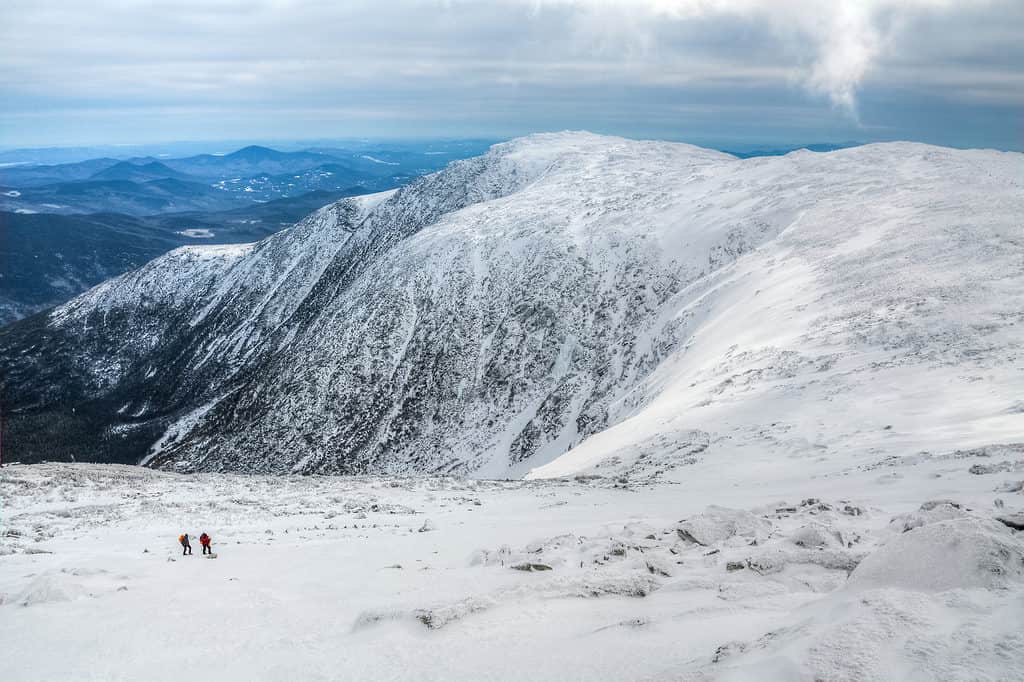
Despite the cold, Mount Washington is a popular destination for outdoor enthusiasts and adventurers.
©David Boutin/Shutterstock.com
Despite the cold, Mount Washington is a popular destination for outdoor enthusiasts and adventurers. The mountain is home to the Mount Washington Observatory, a research and educational organization that studies the mountain’s unique weather patterns. The observatory offers tours and educational programs for visitors, allowing them to learn more about the mountain’s fascinating weather and climate.
The Coldest Town in New Hampshire
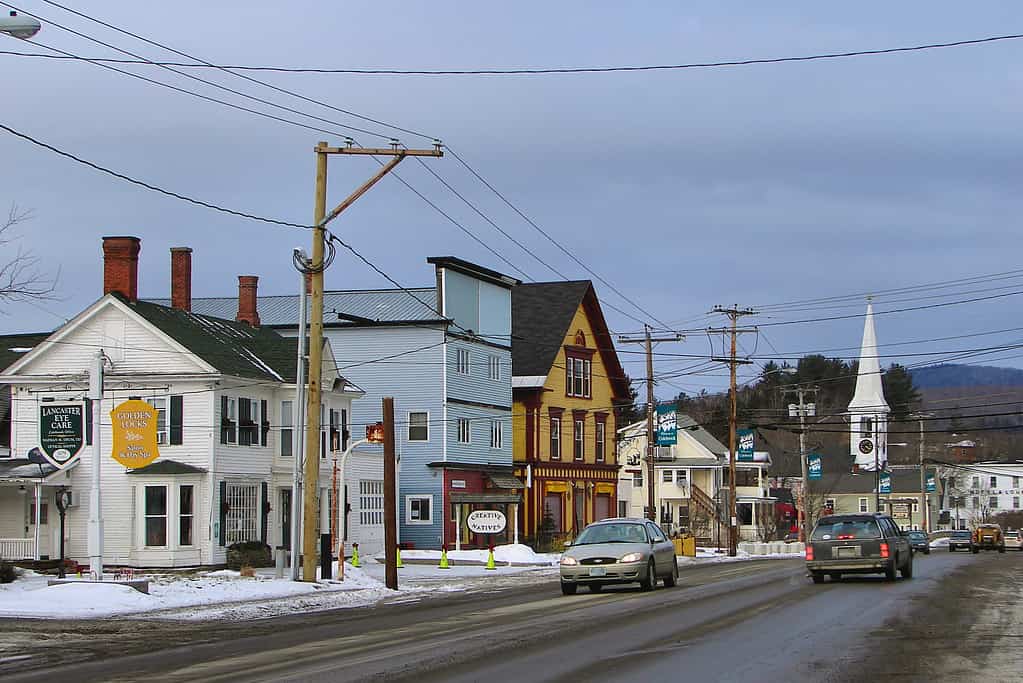
Colebrook is the coldest town in New Hampshire.
©P199 / CC BY-SA 3.0 – License
Most New Hampshire natives would probably guess Mount Washington as the coldest place in the state, but there is another place that is worth noting: Colebrook! In February 1962, Colebrook recorded the lowest temperature ever measured in New Hampshire at -42 degrees Fahrenheit and has the coldest average temperature of any town within the state.
Located in the far northern region of New Hampshire, the town of Colebrook is known for its cold and harsh winter weather. Situated in the Great North Woods region of the state, Colebrook is exposed to frigid air masses coming down from Canada, resulting in some of the coldest temperatures in the state.
The Biggest Blizzard in New Hampshire History
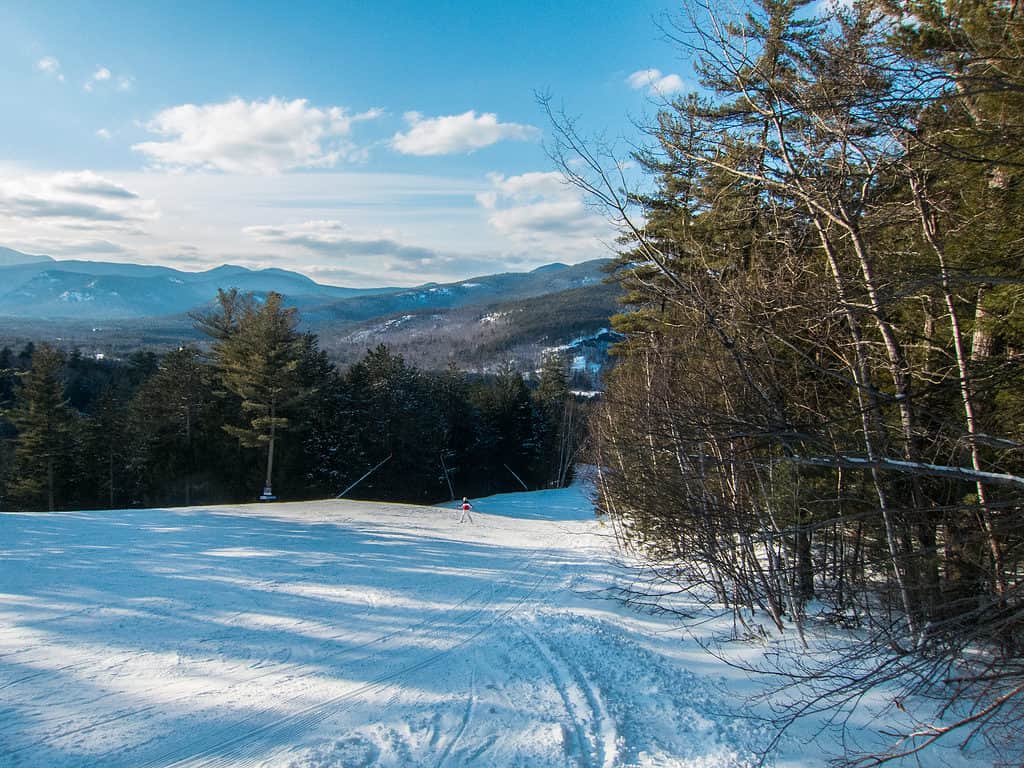
Many people in New Hampshire keep warm with wood-burning stoves and heated blankets.
©Ed Dods/Shutterstock.com
The most intense snowstorm to ever hit New Hampshire came on March 13th, 1993. This powerful storm caused disruption across numerous states and parts of eastern Canada, resulting in an estimated cost of $9 billion, making it the most expensive winter storm in the United States and the most significant snowstorm in modern times in the Northeast.
New Hampshire experienced the most severe blizzard in its history, with a total of 44 million acre-feet of snow and rain. This unprecedented event caused power outages for 10 million people, shut down all the major airports on the East Coast, and even brought tornadoes, floods, and bone-chilling temperatures. Although New England had to endure considerable snowfall and power disruptions, the Southern and Mid-Atlantic regions were far worse off, resulting in over 300 fatalities.
Keeping Warm in New England
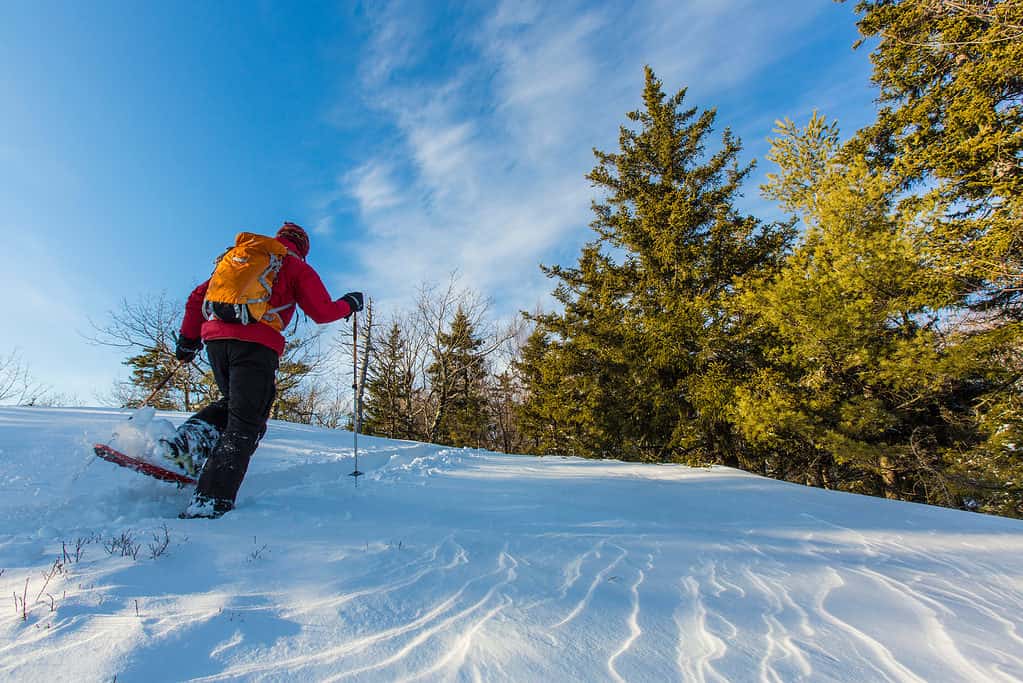
Snowshoeing in New Hampshire
©Danita Delimont/Shutterstock.com
New Englanders have unique ways of keeping warm. When temps drop below 0 degrees as a regular part of the year, you better have a few tricks up your sleeve!
One common way is by heating their homes with furnaces or wood-burning stoves. These heating sources generate warmth that can be distributed throughout the house using a system of ducts or pipes. Another way people keep warm is by wearing layers of warm clothing. This can include things such as thermal underwear, sweaters, coats, hats, and gloves. Some people may also use thick heated blankets and comforters on their beds to stay warm at night. Additionally, many homes in New England have insulation installed in their walls, floors, and ceilings to help retain heat and reduce the amount of heat loss. Finally, some people in New England may use portable heaters or fireplaces to generate additional warmth in specific areas of their homes. All those chimneys on homes in the north aren’t just for show!
Wildlife in New Hampshire During the Cold
There are a number of plants and animals that are able to thrive in the cold conditions of New Hampshire.
Plants
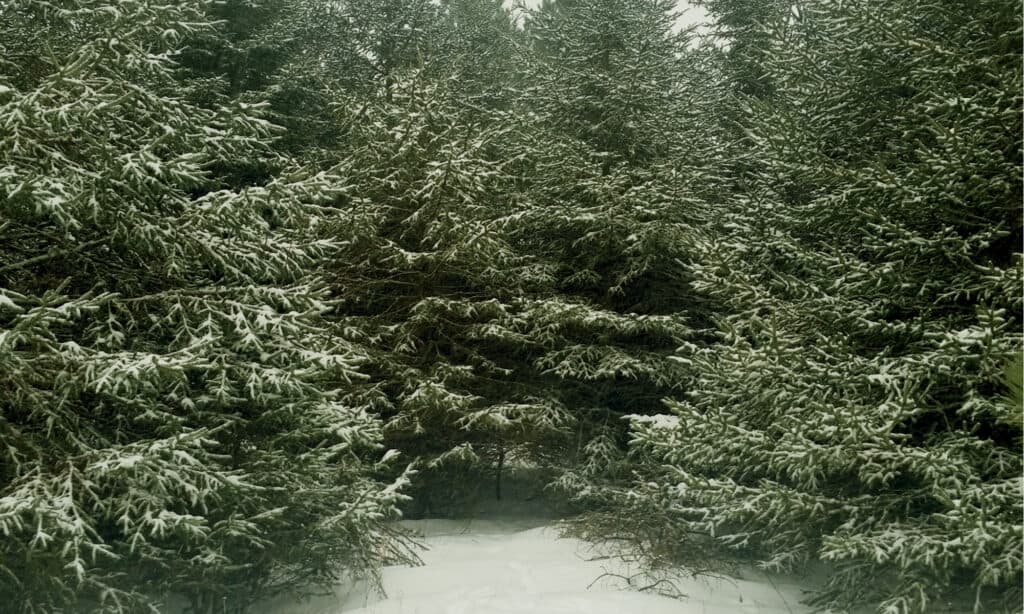
Even without colorful blossoms, balsam fir trees have a wonderful fragrance that many people especially enjoy at Christmastime.
©Sonia Horowitz/Shutterstock.com
One plant that can thrive in cold conditions is the balsam fir, which is a type of evergreen tree that is commonly found in the state. The balsam fir has needle-like leaves that are covered in a waxy substance, which helps to prevent moisture loss and protects the tree from freezing temperatures. Additionally, the balsam fir has a shallow root system that allows it to easily absorb moisture from the ground, even when the ground is frozen.
Another plant that can thrive in cold conditions is the Northern arrowwood, a shrub that is commonly found in wetland areas of New Hampshire. The Northern arrowwood has a dense network of branches and twigs that helps to insulate it from the cold, and it also has the ability to regenerate from its root system even if the above-ground portions of the plant are damaged by cold temperatures.
Animals
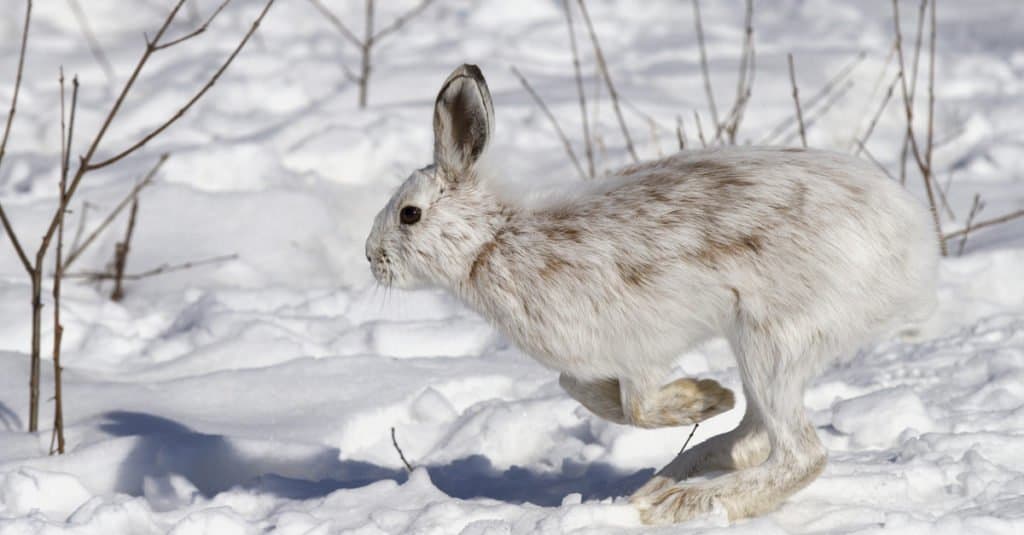
The tips of a snowshoe hare’s ears are black no matter the season.
©Jim Cumming/Shutterstock.com
In terms of animals, one species that can thrive in the cold is the snowshoe hare. The snowshoe hare is a type of rabbit that is well-adapted to living in cold environments, with large hind feet that act like snowshoes to help it move easily through deep snow. Additionally, the snowshoe hare has thick, insulating fur that helps to keep it warm in cold weather. Another animal that can thrive in the cold is the moose, which is the largest member of the deer family and can be found in New Hampshire. The moose has a thick, shaggy coat that helps to insulate it from the cold, and it is also able to conserve heat by using its large size to reduce its surface-area-to-volume ratio.
Whether you’re an animal or a human, having a thick coat is essential to making it through the winters of New Hampshire!
The photo featured at the top of this post is © BestStockFoto/Shutterstock.com
Thank you for reading! Have some feedback for us? Contact the AZ Animals editorial team.






